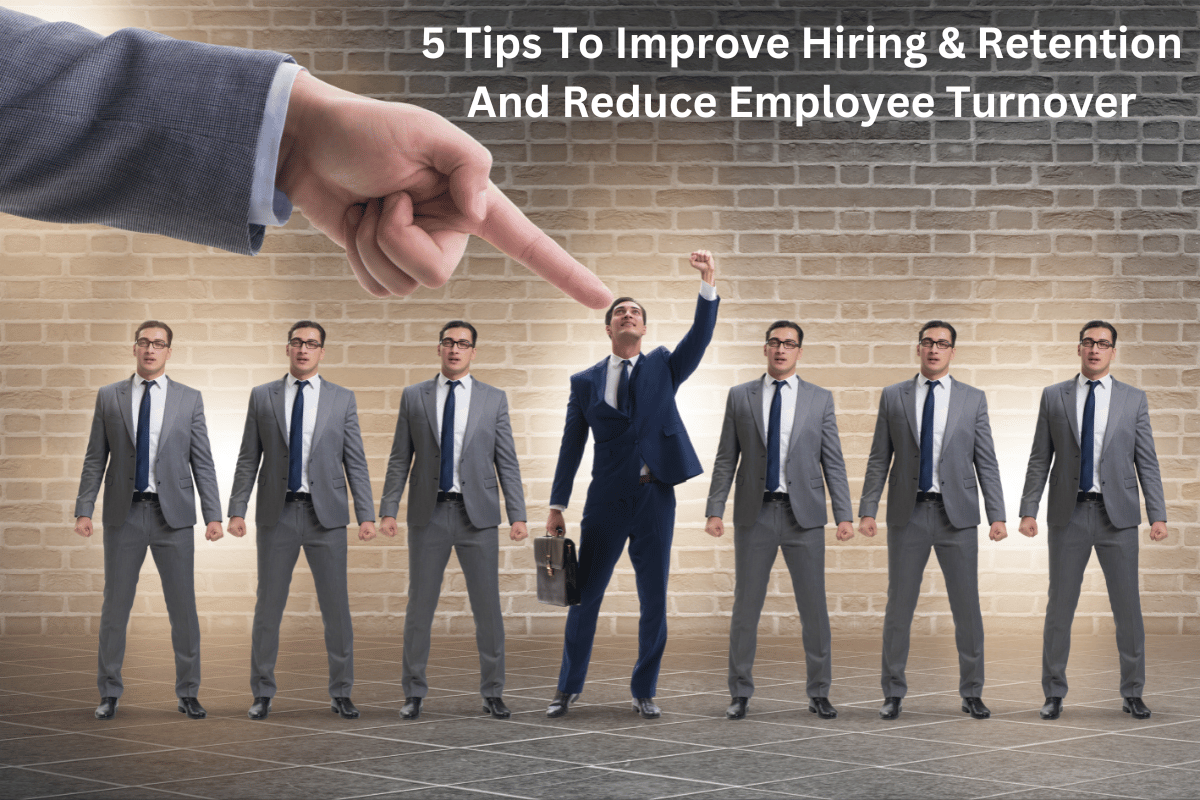5 Tips To Improve Hiring & Retention And Reduce Employee Turnover
Hiring and retention are two vital components for building a strong and effective workforce in any company. Hiring involves attracting, selecting and onboarding the right talent while retention focuses on keeping existing employees engaged and committed to the organization. Well, they both require ongoing effort and adaptation to ensure that a company can attract top talent and maintain a motivated, productive workforce.
In this article we will delve into what employee turnover is all about, why it matters and how you reduce the turnover rate in your organization.
What’s Employee Turnover?
For starters, employee turnover refers to the rate at which employees leave a company and are replaced by new hires. High turnovers can signal issues within the organization and will often have negative impacts.
Turnover rates can be voluntary, whereby the employees leave by their own choice such as resignations or leaving for better opportunities or other easons. This might indicate dissatisfaction with their job conditions, career advancement opportunities, or workplace culture.
Involuntary turnover refers to cases whereby employees are terminated.
Common Causes Employee Turnover?
Employee turnover is often influenced by several factors which include inadequate compensation, poor work-life balance, burnout, unsupportive management and the likes. Studies highlight that employees often leave when they feel undervalued, overworked or underpaid.
Additionally, a toxic workplace culture, insufficient recognition and insufficient feedback also drive turnover.
What’s Considered a Good Employee Turnover Rate?
A healthy turnover rate can vary significantly by industry, company size, and job role, but generally, a turnover rate of around 10% to 15% annually is considered healthy for most industries. This rate suggests a good balance between retaining valuable employees and refreshing the workforce with new talent.
Why Should Strive To Reduce Employee Turnover
A decreased turnover rate means that fewer employees are leaving the company, indicating improved job satisfaction and better retention practices. This typically reflects a more stable work environment where employees feel valued, are satisfied with their roles, and see opportunities for career growth.
Lower turnover reduces the costs associated with hiring and training new staff. It also minimizes disruptions in workflow, and enhances overall team cohesion and productivity.
Of course, as a business you want to have a more stable and skilled workforce as it will minimize the disruptions in your work processes.
5 Ways To Reduce Employee Turnover in Your Business
So, what strategies can you use to retain your best employees? Well, let’s look at some of the ways you can reduce employee turnover:
Enhance Recruitment and Hiring Process:
The best place to start is to hire the right employees. Yes, you are better off hiring candidates who align with your company’s culture and values as it will help ensure a better fit, reducing the likelihood of early departures.
You could outsource the recruitment and hiring process to a good recruitment agency to help you with this. That said, make sure you only get in contact with an agency that has experience in your industry and more so find one with expertise in the type of recruitment you need (e.g., executive, technical, or high-volume hiring).
A good partner will streamline the process and improves the quality of hires which in turn will help in reducing turnover
Offer Competitive Compensation and Benefits:
Remuneration and benefits packages are fundamental in securing employee loyalty and consistent work attendance. You should thus provide attractive salary packages and comprehensive benefits, such as health insurance, retirement plans, and bonuses. Competitive compensation helps retain employees by making them feel valued and fairly rewarded.
This not only enhances job satisfaction and loyalty but also reduces financial stress and increases overall employee engagement, making them less likely to seek opportunities elsewhere.
Foster Career Development Opportunities:
You should also do your best to foster career development opportunities as it demonstrates a company’s commitment to the growth and advancement of your staff.
You can provide training programs, mentorship, and clear career pathways for promotion. These are just a few ways to help employees to grow professionally and see a future within the company.
Promote Work-Life Balance:
Many employees are struggling with work-life balance which can lead them to depletion that leaves them looking for another job role.
According to a 2019 survey done by Jobvite, most employees’ desire a good work-life balance, yet many employees end up working significantly more hours. In fact, the study found that more than half of workers indicate that their employers encourage weekend or after-hours work, and 30% were forced to even work on projects past midnight!
As an organization, you ought to address such kinds of expectations. If possible, implement flexible working arrangements, such as remote work options and adjustable hours, to support employees’ personal and professional needs.
Such a healthy work-life balance will reduce burnout and enhance your employees’ overall job satisfaction.
Create a Positive Work Environment:
Last but not least, you should also work to build a supportive and inclusive workplace culture where employees feel respected and engaged. You can do so by encouraging open communication, recognizing employee achievements, and addressing any issues that crop promptly.
This way you will elevate their morale, a feat that will certainly help lower turnover.
Wrapping up
In a nutshell, improving hiring and retention to reduce employee turnover requires a multifaceted approach that addresses both the initial and ongoing needs of employees. As an organization, you should do your utmost best to hire right and then inculcate a positive culture where you offer growth opportunities, provide fair compensation, and recognize your team’s efforts. After all, this will also contribute to the long-term success of your organization!







